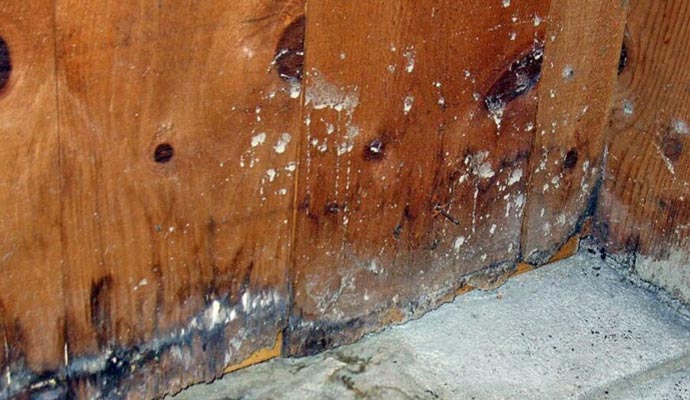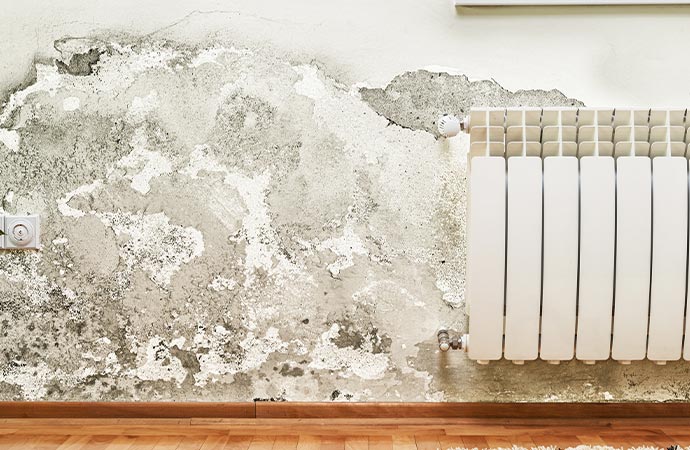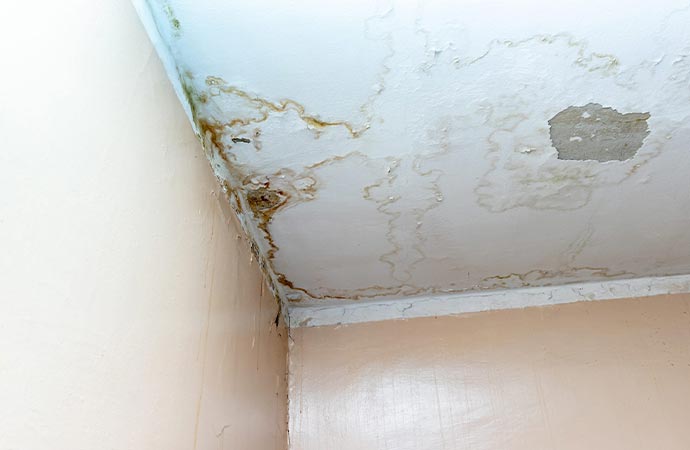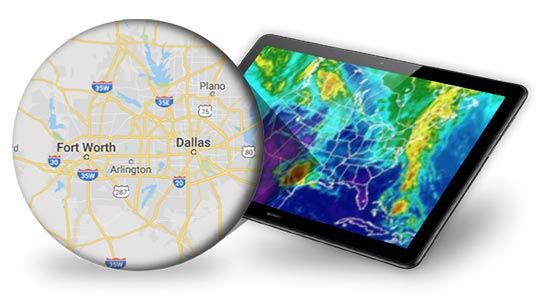24/7 Emergency Services
Projects Complete
- 24/7 Emergency Services
- Free Estimates
- Work Directly with All Insurance Companies
- Bonded & Insured
Drywall Water Damage Repair and Replacement in North Texas
Irreversible drywall water damage occurs rapidly and if not dried promptly, it deteriorates and needs replacing. When drywall is exposed to flooding, it absorbs the water quickly and swells up. Moreover, a huge concern with wet drywall is the growth of mold and mildew and the associated health issues these pathogens bring.
Drywall is commonly used in both residential and commercial construction and is known by other names, such as sheetrock, wallboard and plasterboard, among others. These terms are variations of the same concept and can be used interchangeably. They refer to an interior wall made in the form of pre-constructed sheets or boards that are composed of various materials pressed together. Drywall can be made with components such as paper, fiberboard and plaster. Sheetrock is made of sand, water and gypsum, sandwiched between two layers of thick paperboards.

Visual Inspection
Because sheetrock or wallboard is used as an internal wall, it sometimes takes too long to spot drywall water damage. However, if water damage is suspected, a close inspection may reveal the mark where water has reached and saturated the drywall. In fact, drywall water damage will be apparent from the moisture and bulging or swelling of the board. The wetter the drywall is and the more water it absorbs, the softer and more yielding it becomes. If drywall damage is on the ceiling then a drip, sag, or discoloration on the ceiling should alert homeowners to investigate the cause of water damage immediately.
Repair & Replacement

Since drywall absorbs water like a sponge, repair is only possible in the early stages of water damage. Quick drying of the drywall is crucial and using fans and a dehumidifier is recommended. In situations where water damage is minor, it is possible to get away with drying, taping, mudding and painting the wallboard.
At times, the damage may be hidden for a while and by the time it is finally discovered, it may be too late to dry and repair it. In this case, replacement rather than repair may be necessary. When drywall water damage is severe, professional water damage companies should replace the boards and disinfect the affected area as a precaution against mold. Handy people may decide to cut costs and replace damaged sheetrock themselves. However, replacing water-damaged drywall is not an easy project and should not be attempted by anyone other than a professional. Applying the layers of mud and smoothing them repeatedly is a very tedious and a precise work that may need to be redone until satisfactory results are achieved.
Contact Dalworth Restoration for immediate drywall damage repair or replacement. We are available 24/7 and conveniently located in your Dallas/Fort Worth and North Texas area.
Replacement Tips
- Building Codes for Drywall Requirements - Before beginning a restoration project, it is advisable to check these rules.
- Drywall Sheets have Various Sizes & Categories - ex: Green boards are used in kitchens and bathrooms as they are water resistant.
- Use Utility Knife to Remove Damaged Drywall - Use even lines and make sure the shape is easy to match, such as a square or rectangle.
- Prior to Drywall Repair - Repair the cause of the water damage, dry the area thoroughly and clean it from any dust and dirt.
- Once the Affected Area is Removed - Investigate for any additional damage or mold behind the affected area. If insulation has absorbed water, it needs to be replaced.
- When Replacing the Drywall - Measure and cut to fit the hole. The new drywall then needs to be fitted in place. It may be necessary to use a plywood board to support and anchor the drywall.
- Secure the Drywall - With tape all around the edges.
- Several Coats of Mud, or Plaster Applied to the Area - Smooth out each application and wait until it dries before applying the next one.
- Sanding the Finished Area - Necessary to smooth any rough edges or imperfections.
- The Final Step is Painting the Repaired Area - Match the color on the surrounding wall.
Frequently Asked Questions
It is important to immediately address any damage to your drywall caused by water. This will prevent mold growth and further damage. Do not touch or disturb the affected area. If necessary, turn off power to the area.
Dalworth Restorations employs highly trained professionals who can assess the extent and recommend the best course for repair. Our professionals have the tools and equipment necessary to replace or repair the damaged drywall. We can also address any underlying problems, such as leaks, in order to prevent further water damage. We can also provide tips and tricks to protect your property and prevent further water damage.














